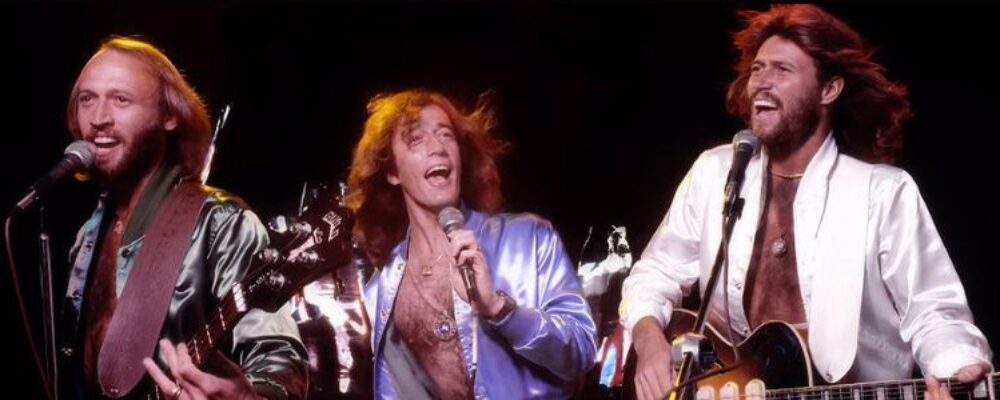
Written by Mark Small.
Photo credits: Jeremy Goldberg.
First published on Berklee Today, Summer 2002.
With special thanks to: Neil Martin from Wellington, New Zealand.
Ever wondered why ‘Night Fever, ‘Stayin’ Alive and ‘More Than a Woman’ have such a great ‘drive’ feel, beside being perfected pop songs? In an interview below with Albhy Galuten who produced and engineered those BG’s tracks and then some explains how they used a drum loop from Night Fever! Listen to all 3 tracks, you’ll here it! Very innovative for 1977!!
Albhy Galuten tells about the birth of some of the greatest Bee Gees compositions in the following part of an article originally published on the website of the Berklee College Of Music.
For the complete article please visit: www.berklee.edu/bt/141/coverstory.html


Albhy Galuten (center) with Bee Gees band leader Barry Gibb (right) and Karl Richardson (left) in a late 1970s recording session. Galuten, Gibb, and Richardson worked together to produce several hit albums.
The next year, Galuten was in France working on a live Bee Gees record when the group was asked to contribute four songs to the movie Saturday Night Fever. Extenuating circumstances and schedule constraints led Galuten to create the first drum loop for one of the songs. “We really wanted to put the tracks down on ‘Stayin’ Alive,” recalled Galuten. But the Bee Gees drummer, Dennis Brian, had gone to England to be with his dad who was ill. Back then, drum machines were really primitive, not even close to what they are today. I had a brainstorm and told Karl we should take a bar from ‘Night Fever,’ which we had already recorded, and make a drum loop.
“Barry and I listened carefully to find a bar that felt really good. Everyone knows that it’s more about feel than accuracy in drum tracks. We chose a bar that felt so good that we ended up using that same loop on ‘Stayin’ Alive,’ and ‘More Than a Woman,’ and then again on Barbra Steisand’s song ‘Woman in Love.’ To make the loop, we copied the drums onto one-quarter-inch tape.”
“Karl spliced the tape and jury rigged it so that it was going over a mic stand and around a plastic reel. At first, we were doing it just as a temporary measure. As we started to lay tracks down to it, we found that it felt really great-very insistent but not machinelike. It had a human feel. By the time we had overdubbed all the parts to the songs and Dennis came back, there was no way we could get rid of the loop.”

Albhy Galuten
In their work together, Galuten and Gibb had tried playing with click tracks, but the music never felt good. “While today’s musicians know how to get a good groove with the click,” said Galuten, “back then, if you used a click track you rarely got a good feel. The loop crossed the boundary giving us music that was in time with a good feel. If I had been working for a technology company then and knew what I was doing, I would have tried to patent the idea. Nonetheless, it changed a lot of things. That first loop was a watershed event in our life and times.”

Marion / GSI
